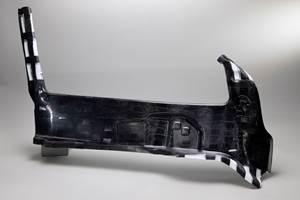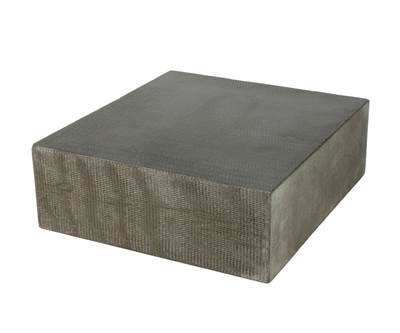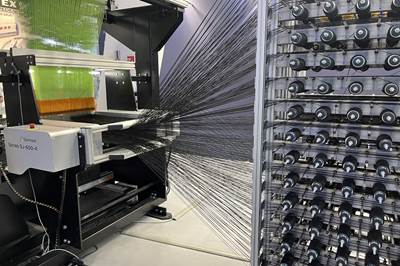3D-woven composites find success in aerospace, space
CAMX 2024: Bally Ribbon Mills experts are displaying the company’s various joints, thermal protection system (TPS) technologies and other 3D woven composites for mission-critical applications.
Share
Source | Bally Ribbon Mills
Bally Ribbon Mills (BRM, Bally, Pa., U.S.) designs, develops and manufactures highly specialized engineered woven fabrics. BRM experts are on hand in to discuss the company’s 3D woven joints, thermal protection systems (TPS) and other 3D structures.
In partnership with NASA (Washington, D.C., U.S.) BRM recently developed a 3D orthogonally woven 3DMAT quartz material for the Orion Multi-Purpose Crew Vehicle’s (MPCV) compression pads. 3DMAT was named the 2023 NASA Government Invention of the Year.
BRM uses 3D continuous weaving to create new joint structures and improve existing joints. Delivering an optimal blend of strength, durability and structural integrity, BRM’s 3D woven joints are available in “Pi – π,” double “T,” “H” and other complex net shapes. According to the company, these joints reduce weight and cost without sacrificing integrity and performance. Because of the nature of the 3D weave, strength and support is translated in all three dimensions, thus enabling the join to reinforce the strength along the load paths of the substructures being joined together. These woven shapes can be tailored to suit the architecture of the structure itself, as well as the subcomponents being joined.
3D woven composites by BRM are said to be particularly successful in aviation heat shield applications such as TPS. These systems are mission-critical components, particularly in space exploration vehicles. The ability to vary yarn types, density, thickness and width, as well as resin type, enables BRM to create fully customizable TPS to fit each specific mission or application’s needs.
Along with TPS systems, 3D woven components also function well as engine parts in aircraft. Replacing traditional titanium engine components with 3D woven carbon fiber composites serves to reduce weight and therefore lifetime cost, all while meeting the rigorous demands of manufacturing and use.
Related Content
-
Composite resins price change report
CW’s running summary of resin price change announcements from major material suppliers that serve the composites manufacturing industry.
-
Aerospace prepregs with braided reinforcement demonstrate improved production rates, cost
A recent time study compares the layup of a wing spar using prepreg with A&P’s TX-45 continuous braided reinforcement versus traditional twill woven prepreg.
-
Dyneema launches woven composite fabric with UHMWPE fiber
Dual-layer structure of Dyneema core with a fully woven Dyneema face fabric resists abrasion and wear, offering durability under significant load conditions and after prolonged use.
Related Content
Composite resins price change report
CW’s running summary of resin price change announcements from major material suppliers that serve the composites manufacturing industry.
Read MoreAerospace prepregs with braided reinforcement demonstrate improved production rates, cost
A recent time study compares the layup of a wing spar using prepreg with A&P’s TX-45 continuous braided reinforcement versus traditional twill woven prepreg.
Read MoreDyneema launches woven composite fabric with UHMWPE fiber
Dual-layer structure of Dyneema core with a fully woven Dyneema face fabric resists abrasion and wear, offering durability under significant load conditions and after prolonged use.
Read MoreHighly tunable, woven lattice reinforcements target automotive structures
CAMX 2023: Startup Weav3D will be demonstrating its two collaborative automotive demonstrator parts and present two conference papers.
Read MoreRead Next
Bally Ribbon Mills technology features infusion for 3D woven joints
Woven fabrics manufacturer Bally Ribbon Mills is highlighting its film infusion capabilities for 3D woven joints woven thermal protection systems and more.
Read MoreOptima 3D demonstrates new 3D weaving technology for ASCC
U.K. company will install compact system with innovative shuttle and digital twin capability for soft and hard composite structures at University of Maine’s new textile lab.
Read MoreCutting 100 pounds, certification time for the X-59 nose cone
Swift Engineering used HyperX software to remove 100 pounds from 38-foot graphite/epoxy cored nose cone for X-59 supersonic aircraft.
Read More









